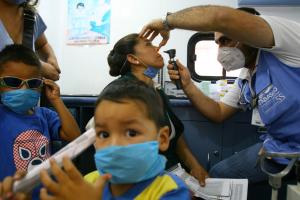
|  |  |  Health & Beauty | October 2009 Health & Beauty | October 2009  
High Risk for Critically Ill H1N1 in Mexico
 UPI UPI
go to original
October 13, 2009


| | Doctors give free medical checks to those people who fear they may have contracted the swine flu (H1N1) virus in downtown Mexico City on April 29, 2009. The World Health Organization warned that the outbreak is moving closer to a pandemic. (UPI/Israel Rosas) |  |
Mexico City, - Those critically ill from H1N1 influenza in Mexico were associated with severe acute respiratory distress syndrome and shock, researchers said.

Dr. Guillermo Dominguez-Cherit of Instituto Nacional de Ciencias Medicas y Nutricion in Mexico City and colleagues conducted an observational study of critically ill patients at six hospitals in Mexico that treated confirmed, probable, or suspected 2009 H1N1 virus from March 24 to June 1.

Among 899 patients admitted to hospitals with confirmed, probable, or suspected H1N1 flu 58 became critically ill. The critically ill patients had a median age of age 44.

Most were treated with antibiotics and 45 patients were treated with drugs including oseltamivir and zanamivir. Fifty-four patients required mechanical ventilation.

"Our analysis of critically ill patients with influenza A H1N1 reveals that this disease affected a young patient group," the authors said in a statement.

The study, published online in the Journal of the American Medical Association, found that by 60 days, 24 of the critically ill patients - 41.4 percent - died, while 19 patients died within the first two weeks after becoming critically ill. |

 |
|  |



